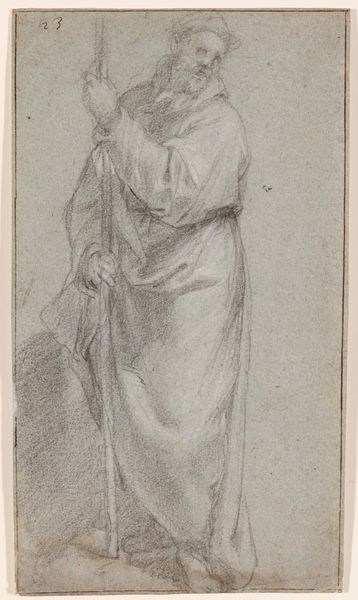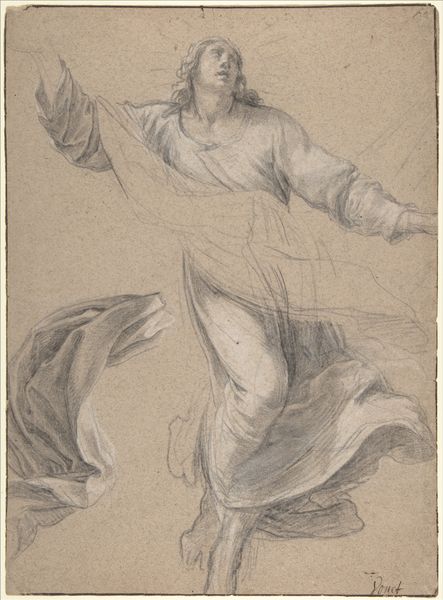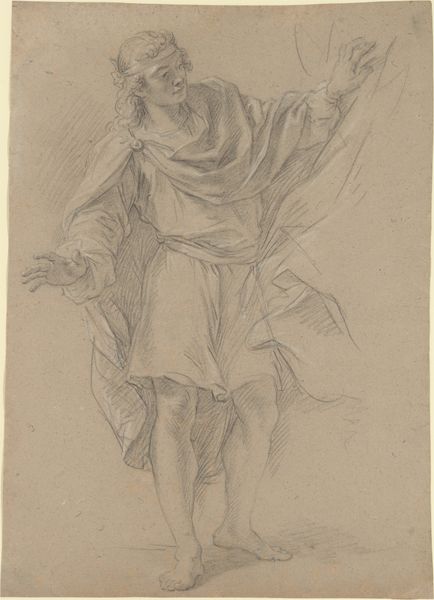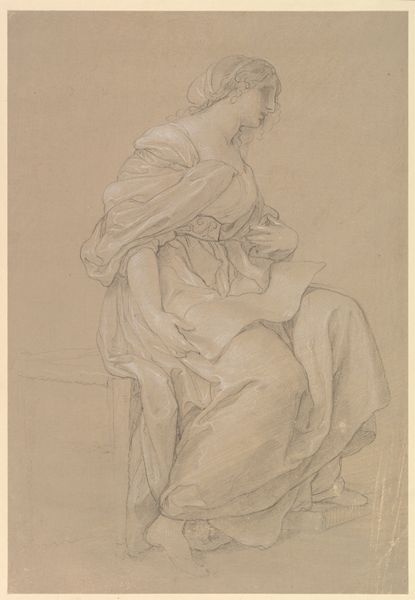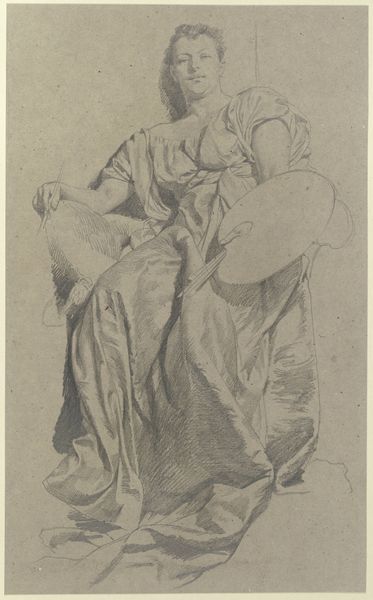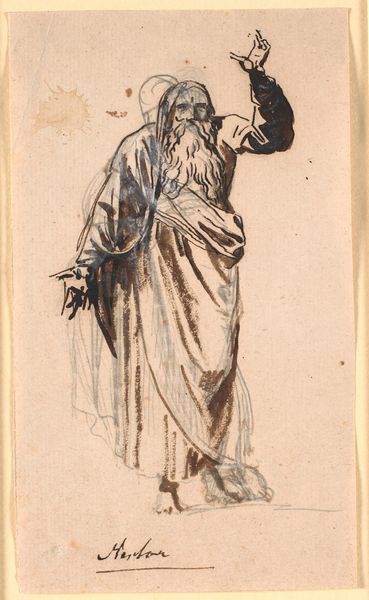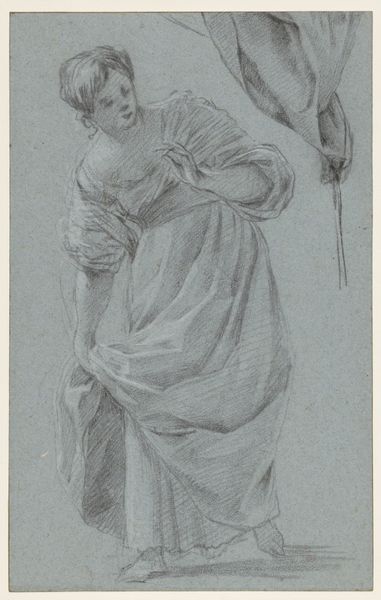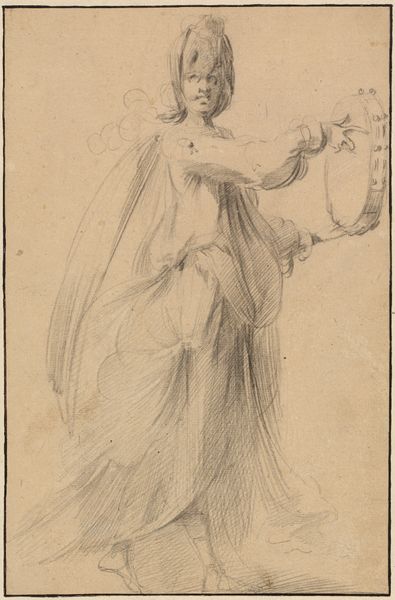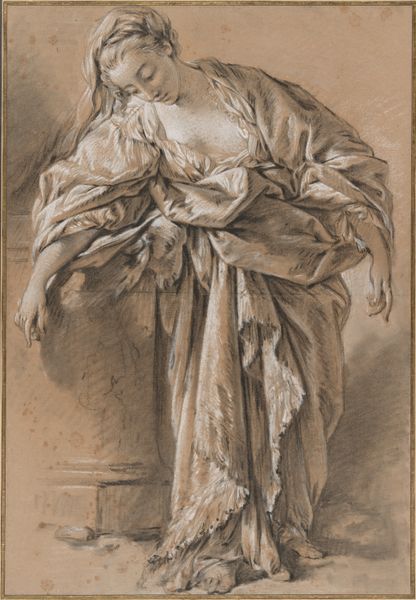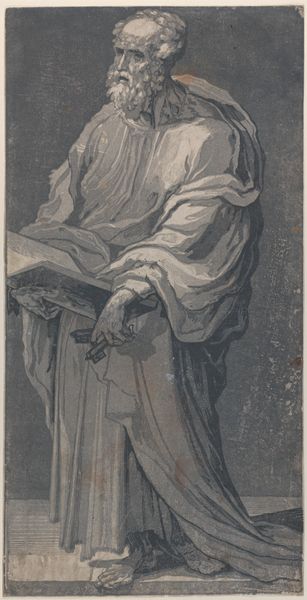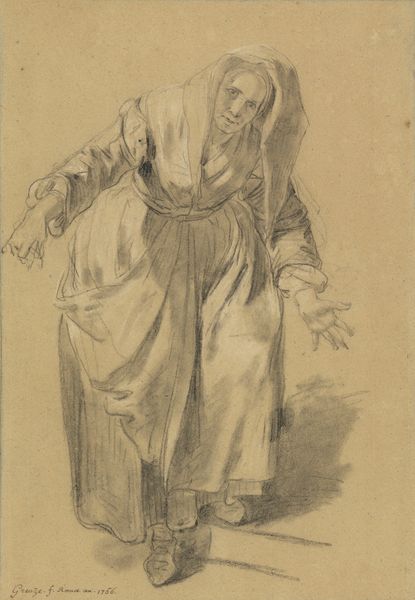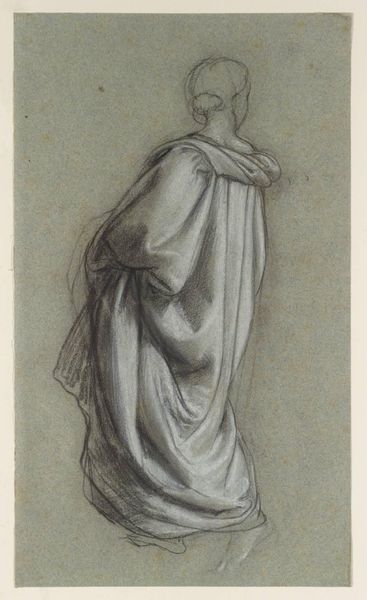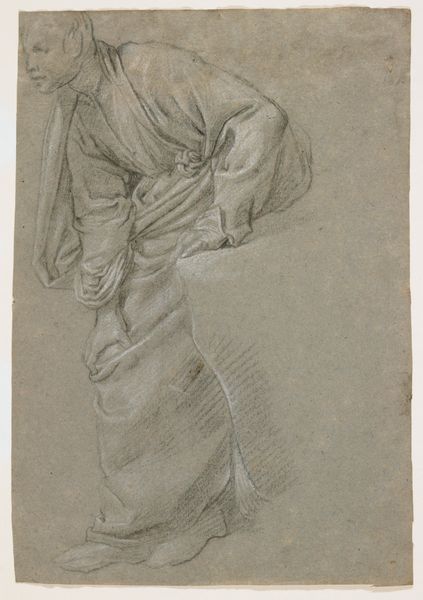
drawing, ink, chalk, charcoal
#
portrait
#
drawing
#
baroque
#
charcoal drawing
#
figuration
#
ink
#
chalk
#
charcoal
#
history-painting
Copyright: Public Domain
Curator: Jacob de Wit created this study of Moses around 1736-1737. It's currently held in the Städel Museum's collection. Editor: Striking. The stark contrast of charcoal against the grey paper almost feels sculptural, emphasizing the folds and weight of the figure's drapery. Curator: Indeed. Notice the dynamism de Wit achieves through the subtle variations in line thickness, skillfully evoking texture and form. The charcoal, chalk, and ink work together to create depth. Editor: I’m also struck by the material reality of this work. Looking at it, I'm thinking of the workshops where pigments were ground and paper was made, each artisan contributing to the possibility of this image. Consider the labour invested to create such work, transforming raw material into artistic form. Curator: That’s a perspective well taken. The Baroque theatricality of the pose certainly directs us, too. Note how Moses' outstretched arms and expressive gaze command our attention and activate the space. Editor: It seems less like commanding and more like supplication to me. The rawness of the medium makes it look immediate. Were I encountering the biblical figure represented this way, I would certainly feel a shared sense of supplication and respect. Curator: Certainly a plausible reading. I see it more as testament to de Wit’s mastery of capturing complex emotion through careful articulation of line and shadow. The way he uses those tools really elevates the composition to transcend mere depiction. Editor: I suppose where you see refinement, I am taken by the work's more primal elements. Regardless, considering the collaborative nature of its construction certainly enriches our viewing experience. Curator: It does, doesn’t it? De Wit’s orchestration of form is powerful, while attending to material and production allows us to better engage with art's creation and existence within history. Editor: Well put. Let us both listen and seek to see beyond our expectations.
Comments
No comments
Be the first to comment and join the conversation on the ultimate creative platform.
